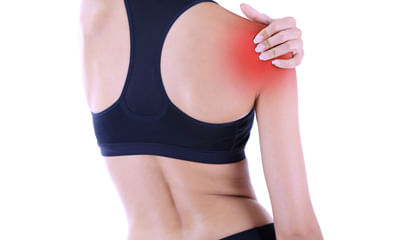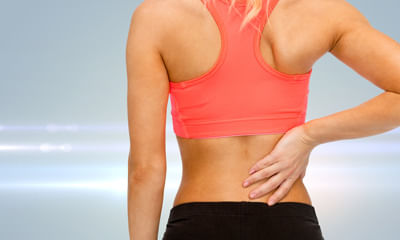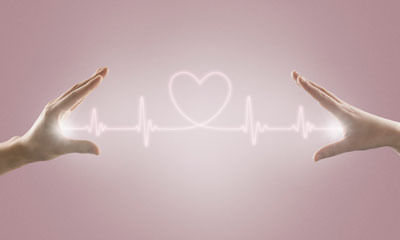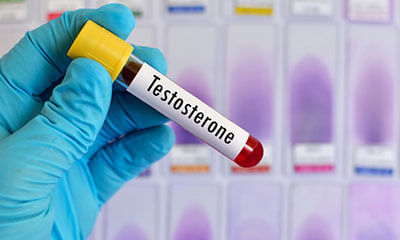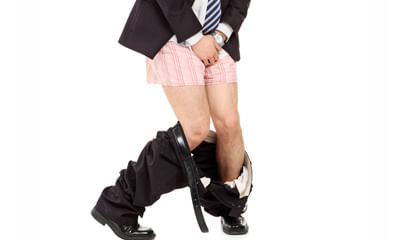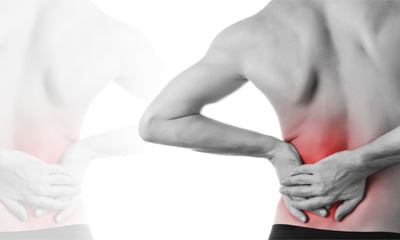Increase Blood Flow To Kidneys
My mother (49) is suffering from joint pain since dec 2022 occurring randomly, sometimes at feet, fingers, or shoulders. ...
Ask Free Question
Rheumatoid arthritis the "normal" range (or negative test result) for rheumatoid factor is less than 14 iu/ml. Any result with values 14 iu/ml or above is considered abnormally high, elevated, or positive. Treatmentthere is no cure for rheumatoid arthritis. But clinical studies indicate that remission of symptoms is more likely when treatment begins early with medications known as disease-modifying antirheumatic drugs (dmards). Medicationsthe types of medications recommended by your doctor will depend on the severity of your symptoms and how long you've had rheumatoid arthritis. •nsaids. Nonsteroidal anti-inflammatory drugs (nsaids) can relieve pain and reduce inflammation. Over-the-counter nsaids include ibuprofen (advil, motrin ib) and naproxen sodium (aleve). Stronger nsaids are available by prescription. Side effects may include stomach irritation, heart problems and kidney damage. •steroids. Corticosteroid medications, such as prednisone, reduce inflammation and pain and slow joint damage. Side effects may include thinning of bones, weight gain and diabetes. Doctors often prescribe a corticosteroid to relieve acute symptoms, with the goal of gradually tapering off the medication. •disease-modifying antirheumatic drugs (dmards). These drugs can slow the progression of rheumatoid arthritis and save the joints and other tissues from permanent damage. Common dmards include methotrexate (trexall, otrexup, others), leflunomide (arava), hydroxychloroquine (plaquenil) and sulfasalazine (azulfidine). Side effects vary but may include liver damage, bone marrow suppression and severe lung infections. •biologic agents. Also known as biologic response modifiers, this newer class of dmards includes abatacept (orencia), adalimumab (humira), anakinra (kineret), baricitinib (olumiant), certolizumab (cimzia), etanercept (enbrel), golimumab (simponi), infliximab (remicade), rituximab (rituxan), sarilumab (kevzara), tocilizumab (actemra) and tofacitinib (xeljanz). These drugs can target parts of the immune system that trigger inflammation that causes joint and tissue damage. These types of drugs also increase the risk of infections. In people with rheumatoid arthritis, higher doses of tofacitinib can increase the risk of blood clots in the lungs. Biologic dmards are usually most effective when paired with a nonbiologic dmard, such as methotrexate. Therapy your doctor may send you to a physical or occupational therapist who can teach you exercises to help keep your joints flexible. The therapist may also suggest new ways to do daily tasks, which will be easier on your joints. For example, you may want to pick up an object using your forearms. Assistive devices can make it easier to avoid stressing your painful joints. For instance, a kitchen knife equipped with a hand grip helps protect your finger and wrist joints. Certain tools, such as buttonhooks, can make it easier to get dressed. Catalogs and medical supply stores are good places to look for ideas. Surgeryif medications fail to prevent or slow joint damage, you and your doctor may consider surgery to repair damaged joints. Surgery may help restore your ability to use your joint. It can also reduce pain and improve function. Rheumatoid arthritis surgery may involve one or more of the following procedures: •synovectomy. Surgery to remove the inflamed lining of the joint (synovium) can be performed on knees, elbows, wrists, fingers and hips. •tendon repair. Inflammation and joint damage may cause tendons around your joint to loosen or rupture. Your surgeon may be able to repair the tendons around your joint. •joint fusion. Surgically fusing a joint may be recommended to stabilize or realign a joint and for pain relief when a joint replacement isn't an option. •total joint replacement. During joint replacement surgery, your surgeon removes the damaged parts of your joint and inserts a prosthesis made of metal and plastic. Surgery carries a risk of bleeding, infection and pain. Discuss the benefits and risks with your doctor.
I am 25 year old female, I have side, back, joints and muscle pains and have checked my kidney function ,is function wel ...
Ask Free Question
What is your age? Since when r you having this? What r other symptoms that you r experiencing? By doing what like walking, exertion, eating or empty stomach- it increases or decreases in intensity. For how much time it remains? Is there stiffness also? How is your appetite? R you constipated or having loose stools? Any problem in urine? I need details of the case.in the meanwhile do test your hb, blood sugar, thyroid function test, vit d, calcium. Follow this 1. Take your breakfast every day. Don't skip it. U should eat whatever your mother or grandparent eat in bfast. I mean to say whatever is your traditional food. If punjabi eat paratha, if belongs to south then take idli/ dosa etc. 2. Don't overeat 3. Don't take tea empty stomach. Eat something like a banana (if you are not diabetic) or any seasonal fruit or soaked almonds and a glass of plain water first thing in the morning (preferably within 10 mins of waking up). No only biscuits or rusk will not do. 4. Have light meals every 2 hours (in addition to your breakfast, lunch n dinner) e.g. Nariyal paani, chaach, a handful of mixed dry fruits, a handful of peanuts, any fresh n seasonal fruit (eat whole fruit not juice), a cup of curd/milk etc 5. Take simple food like rice n dal in dinner. Finish your dinner at least 2 hours before going to sleep. 6. Maintain active life style 7. Avoid fast foods, spicy n fried foods, carbonated beverages 8. Take a lot of green vegetables n fruit. 9. Drink lot of water. 10. Everyday preferably sleep on same time 11. Take 1tsp of ghee in bfast, lunch n dinner. Exercise in the form of yoga, cycling, swimming, gym etc.
Hello doctor I want to ask you for my father treatment, he is 82 years old he is suffering from kidney problems, heart p ...
Ask Free Question
Hi. Increase in creatinine happens due to dysfunction of the kidney. Looking at your history it looks like your father is having chronic kidney disease. Some contribution to everything is partly his aging process as well. However he will need evaluation for the cause of worsening from 1.8 to 2.3. Also his diet seems to be reasonable. Pls meet a nearby nephrologist immediately.
Good morning sir I am from pakistan. My age is 35. Unmarried. After 8 month getting married. I have small penis size 4 i ...
Ask Free Question
The problem of erectile dysfunction and pre-mature ejaculation are most common sex problems occurring in all ages of men, and its good that these both have great recovery rates with ayurvedic medications. Let me explain you briefly about erectile dysfunction and pre-mature ejaculation so that it can ease your anxiety about the problem. In erectile dysfunction, men are not able to get or keep an erection that is sufficient to have penetrative sex. In premature ejaculation men come out very fast, men gets discharged either before penetration or immediately after penetration, they hardly get some strokes, so the female partner remains unsatisfied. There are many possible causes of ed and pe, and they can include both emotional and physical conditions. Common causes include: diabetes, high blood pressure, high cholesterol, obesity, low testosterone levels or other hormone imbalances, kidney disease, increased age, stress, anxiety, depression, relationship problems, certain prescription medications, sleep disorders, consuming too much alcohol, using tobacco products ed and pe can be caused by only one of these factors or by several of them. That’s why it’s important to work with your doctor so that they can rule out or treat any underlying medical conditions. These problems of erectile dysfunction and pre-mature ejaculation are very much treatable. I am suggesting you some ayurvedic medicines. Take aswagandhadi churan half teaspoon in the morning & in the night. Take capsule shilajit one in the morning and one in the night, take tablet manmath ras one in the morning and one in the night. Take tablet pushp dhanva ras one in the morning and one in the night. And take tablet sidh makardhwaj vati with gold, one in the morning and one in the night after food. All the above preferably with hot milk or with water also apply and message shri gopal tail on your penis three times a week for 2 to 4 minutes. Avoid junk food, oily and spicier food, alcohol, tobacco, tension and anxiety. Start doing brisk walk or running or cardio exercises for at least 30 min a day. Start doing yoga, pranayama, meditation, vajroli mudra. Ashwini mudra, kegel exercise for at least 30 min a day. Start taking hot milk twice a day. 2-3 dates in the morning and in the night with milk. Do all the above suggested treatment for 3 months and see the results. If you don't get satisfactory results then please go to your family doctor or a good sexologist. You can also contact me on my private chat or directly in my clinic. We can send you the medicines by courier.
Can a 45 years old man have 1000 ng/dl levels of testosterone if he maintain healthy life style? ...
Ask Free Question
Hello- with age, usually after the age of 30, the amount of testosterone in the body declines. Other causes of low testosterone levels include an injury or infection, diabetes, chronic liver or kidney disease, chemotherapy or radiation treatments, genetic abnormalities, hemochromatosis (iron overload), pituitary gland dysfunction, inflammatory diseases that impact the pituitary gland, stress, alcoholism and obesity and certain medications. It is also associated with certain nutritional deficiencies. A low testosterone level can affect both your quality of life and your health. It can cause fatigue, erectile dysfunction, depression and other emotional issues, insomnia, poor concentration, decreased bone density, and increase in body fat. To find out their testosterone levels, men can opt for a blood test. In case the test shows low testosterone level and you experience the signs and symptoms for the same, don't worry. Ayurvedic aphrodisiac herbs and some simple lifestyle and dietary changes can help boost your testosterone level naturally.
I have distribute too much time by which there is some problem in my penis like auto standing of penis, pain in penis, h ...
Ask Free Question
Hello- there are a variety of herbs that can help heal the damaged nervous endings of a fractured sex organ and reestablish the inner connection between the brain and the penis via the parasympathetic nerves. Gotu kola is an indian herb used good for healing skin and connective tissue. Ashwagandha and schizandra ensure potency. Damiana is good for improving blood flow to the genital area. Sarsaparilla contains a testosterone-like substance for men. Wild yam contains natural steroids that rejuvenate and add vigor to lovemaking. Yohimbe bark expands the blood vessels in the penis and increases the blood flow and nitrous oxide important for achieving an erection. Over-ejaculation can overtax the parasympathetic bioelectric battery, leading to a slow testicular function that results in insufficient testosterone and sperm count. Many herbal remedies can help reverse these adverse developments. For an inflamed urethra, herbs are quite useful in fighting infection, relieving pain, and strengthening the urinary system. Cranberry is good for kidney health. Green tea promotes antioxidant, anticancer and immune effects. Cat's claw is good for anticancer, immune, and antibacterial or antifungal activity. Bromelain reduces pain and inflammation.
My pet is suffering from renal/kidney functioning. The Dr. Had taken up blood test in which he informed my pets creatini ...
Ask Free Question
I'm sorry to hear that your pet is experiencing severe renal/kidney dysfunction. A creatinine level of 14 is indeed very high, indicating significant kidney impairment. The symptoms of vomiting and liquid stools can also be related to kidney disease. It's important to consult with your veterinarian for immediate medical attention and guidance. Here are some general suggestions in the meantime: follow the veterinarian's advice: your veterinarian is the best resource for guidance in this situation. They will provide a specific treatment plan tailored to your pet's condition, which may include medications, fluid therapy, and dietary adjustments. Follow their instructions closely. Encourage hydration: offer fresh water to your pet frequently, as maintaining hydration is crucial. If your pet is not consuming enough water, your veterinarian may recommend administering fluids subcutaneously (under the skin) to ensure proper hydration. Adjust the diet: in many cases of kidney disease, a specialized renal diet is recommended. These diets are formulated to reduce the workload on the kidneys and manage the progression of the disease. Ask your veterinarian for a suitable diet recommendation for your pet's condition. Medications and supplements: your veterinarian may prescribe medications to help manage symptoms, reduce nausea, and support kidney function. They may also recommend specific supplements to support renal health. Administer these as directed by your veterinarian. Monitor and report changes: keep a close eye on your pet's symptoms and behavior. Note any changes, such as worsening vomiting, increased lethargy, or changes in appetite. Report these changes promptly to your veterinarian. Provide a comfortable environment: ensure your pet has a quiet and comfortable space to rest. Minimize stressors and provide a warm and supportive environment to aid in their recovery.
Dear sir how I can alkaline my urine and blood naturally. How I can increase my urine output to flush out toxins from bo ...
Ask Free Question
You can have fruits like apple, grapefruit, almonds. Citrus fruits can also alkalinze your urine but in aggressive way if had too much. Drink 4-5 litres of water daily,(if you don't have kidney, heart issues) it will automatically flush out toxins and increase urine output.
I have done below blood test. Testosterone free - 7.34 pg/ml (1.00 - 28.28 pg/ml) testosterone total -358.16 ng/dl (164. ...
Ask Free Question
Hello- testosterone is a steroid hormone primarily secreted by a man's testicles. This hormone is responsible for the development of male sexual characteristics. Testosterone is also important for maintaining muscle bulk, adequate levels of red blood cells, a sense of well-being, and sexual function. With age, usually after the age of 30, the amount of testosterone in the body declines. Other causes of low testosterone levels include an injury or infection, diabetes, chronic liver or kidney disease, chemotherapy or radiation treatments, genetic abnormalities, hemochromatosis (iron overload), pituitary gland dysfunction, inflammatory diseases that impact the pituitary gland, stress, alcoholism and obesity and certain medications. It is also associated with certain nutritional deficiencies. A low testosterone level can affect both your quality of life and your health. It can cause fatigue, erectile dysfunction, depression and other emotional issues, insomnia, poor concentration, decreased bone density, and increase in body fat. In case the test shows low testosterone level and you experience the signs and symptoms for the same, don't worry. Ayurvedic aphrodisiac herbs and some simple lifestyle and dietary changes can help boost your testosterone level naturally.
My in law had legs paining problem but recently her legs were became red don't no what kind of problem she had could you ...
Ask Free Question
It may be due to venous insufficiency kindly do certain exercises that may help you to get rid of your pain. Strengthening exercises 5. Half squat to do this exercise: 1. Get into a standing squat position with your feet shoulder-width apart. Place your hands on your hips or out in front of you for balance. 2. Looking straight ahead, slowly squat down about 10 inches. This is the halfway point to a full squat. 3. Pause for a few seconds, then stand up by pushing through your heels. 4. Do 2 to 3 sets of 10 repetitions. 5. Calf raises to do this exercise: 1. Stand with your feet shoulder-width apart. Position yourself next to a wall or hold on to the back of a chair for support. 2. Lift both your heels off the ground so that you’re standing on the balls of your feet. 3. Slowly lower your heels to the starting position. Control is important with this exercise for strengthening your calf muscles. 4. Do 2 to 3 sets of 10 repetitions. 6. Hamstring curl 7. Leg extensions to do this exercise: 1. Sit up tall in a chair. 2. Put your feet flat on the floor, hip-width apart. 3. Look straight ahead, contract your thigh muscles, and extend one leg as high as possible without raising your buttocks off the chair. 4. Pause, then lower to the starting position. 5. Do 2 to 3 sets of 10 repetitions for each leg. 8. Straight leg raises to do this exercise: 1. For this exercise, you can use a mat to add cushioning under your back. 2. Lie down on the floor with one leg bent and one leg straight out in front of you. 3. Contract the quadricep of your straight leg and slowly raise it up off the floor until it’s the same height as your bent knee. 4. Pause at the top for 5 seconds, then lower to the starting position 5. Do 2 to 3 sets of 10 repetitions for each leg. 9. Side leg raises to do this exercise: 1. Lie on your side with your legs stacked on top of each other. Cradle your head in your hand, and place your other hand on the floor in front of you. 2. Raise your top leg as high as you comfortably can. You should feel this on the side of your hips. 3. Pause briefly at the top, then lower your leg. 4. Do 2 to 3 sets of 10 repetitions for each leg. 10. Prone leg raises to do this exercise: 1. For this exercise, you can use a mat to add cushioning beneath you. 2. Lie on your stomach with your legs straight out behind you. You can let your head rest on your arms. 3. Engage your glute and hamstring muscles in your left leg and lift your leg as high as you exercise. 4. Hold your leg in the lifted position for 5 seconds. 5. Lower your leg, rest for 2 seconds, then repeat. 6. Do 2 to 3 sets of 10 repetitions for each leg. Lifestyle and home remedies rest. Take a break from your normal activities to reduce repetitive strain on your knee, give the injury time to heal and help prevent further damage. A day or two of rest may be all you need for a minor injury. More severe damage is likely to need a longer recovery time. Ice. Ice reduces both pain and inflammation. A bag of frozen peas works well because it covers your whole knee. You also can use an ice pack wrapped in a thin towel to protect your skin. Although ice therapy is generally safe and effective, don't use ice for longer than 20 minutes at a time because of the risk of damage to your nerves and skin. Heat. You may experience temporary pain relief by applying a heat pack or hot-water bottle to the painful area on your knee. Compression. This helps prevent fluid buildup in damaged tissues and maintains knee alignment and stability. Look for a compression bandage that's lightweight, breathable and self-adhesive. It should be tight enough to support your knee without interfering with cot oirculation. Elevation. To help reduce swelling, try propping your injured leg on pillows or sitting in a recliner. Home remedies and prevention: •drinking plenty of water. Over-the-counter nsaids (nonsteroidal anti-inflammatory drugs), such as ibuprofen (advil, motrin). •home remedies may be very beneficial for the management of chronic gout, as well. The dietary modifications detailed above can be very effective in certain patients. Drinking plenty of water to remain well-hydrated can be beneficial in preventing gout attacks. •limit or avoid alcohol. Talk with your doctor about whether any amount or type of alcohol is safe for you. Recent evidence suggests that beer may be particularly likely to increase the risk of gout symptoms, especially in men. •get your protein from low-fat dairy products. Low-fat dairy products may actually have a protective effect against gout, so these are your best-bet protein sources. •limit your intake of meat, fish and poultry. A small amount may be tolerable, but pay close attention to what types — and how much — seem to cause problems for you. •maintain a desirable body weight. Choose portions that allow you to maintain a healthy weight. Losing weight may decrease uric acid levels in your body. But avoid fasting or rapid weight loss, since doing so may temporarily raise uric acid levels. Food to eat: •fresh fruits and vegetables such as berries, oranges, bell pepper and pineapple. •low-fat dairy products, such as yogurt and skimmed milk. •nuts including nut butter ••s such as almond butter and peanut butter. •whole grains. •potatoes, rice, whole-grain bread and pasta. •eggs (in moderation). •oils such as olive oil.•flax and other seeds. •plenty of water and other non-sugary and non-alcoholic drinks. •vitamin c. Supplements containing vitamin c may reduce the levels of uric acid in your blood. •cherries have been lower levels of uric acid, as well as reduce the number of gout attacks. •decaffeinated coffee and caffein will lower uric acid levels. Foods to be avoided: •alcohol is a major trigger for gout attacks. Beer is especially bad for gout since it is rich in purines. •certain fish, seafood and shellfish, including anchovies, trout, sardines, herring, codfish, mussels, codfish, scallops and haddock. •organ meats such as liver, kidney, sweetbreads and brain. People with gout, however, can have a moderate intake of lean meats such as chicken and turkey. •red meat including bacon, turkey, veal and venison.•dried beans and peas. Food products containing a high amount of fructose such as soda and some juices, cereal, ice cream, candy and junk food.

